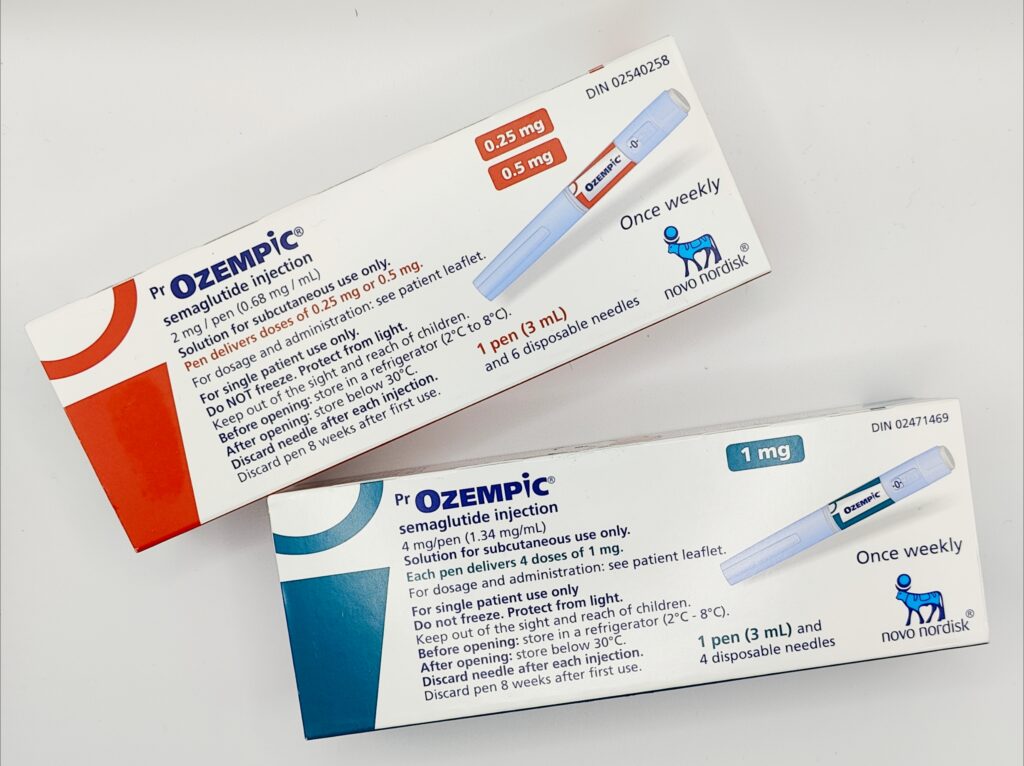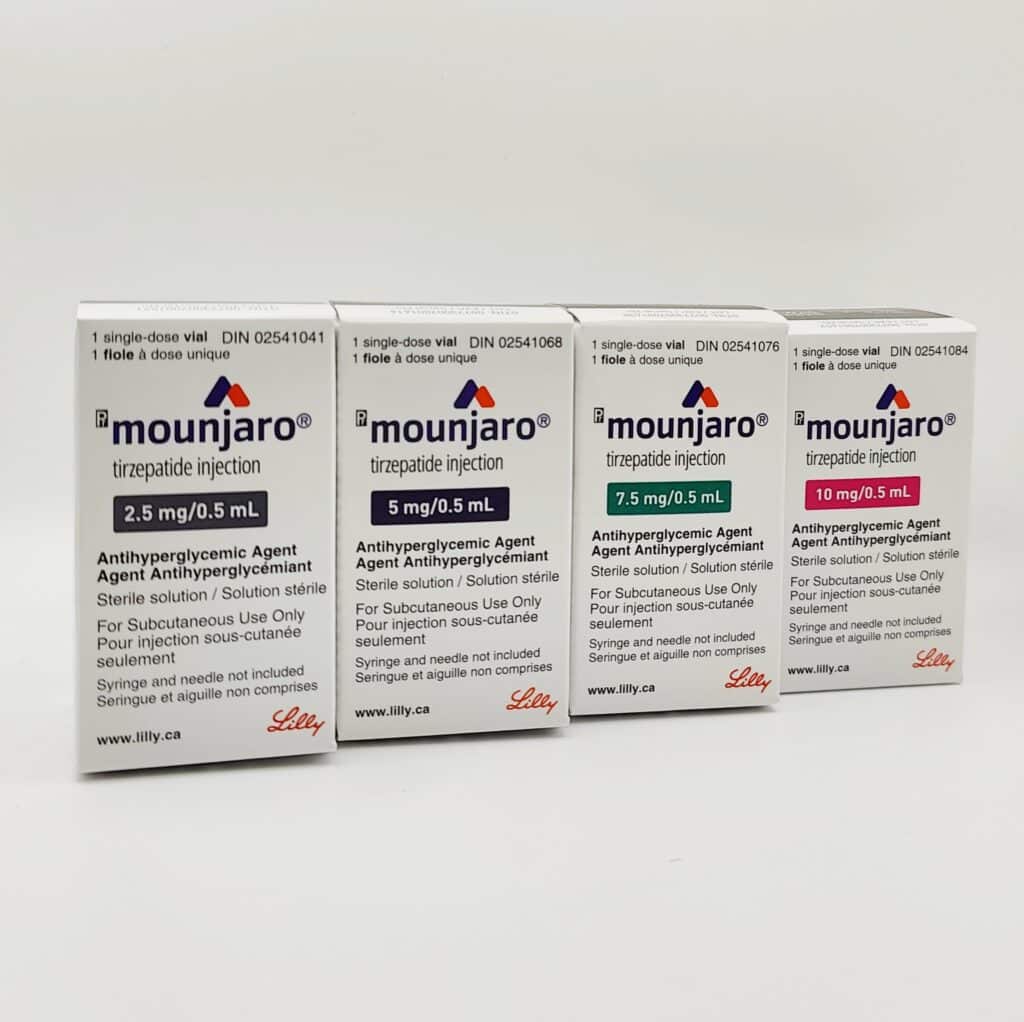Ozempic vs. Mounjaro: Compare Side Effects, Doses, and Which Is Right for You
Ozempic vs. Mounjaro: Compare Side Effects, Doses, and Which Is Right for You
- Jason K
Ozempic (semaglutide) and Mounjaro (tirzepatide) are injectable medications designed to manage type 2 diabetes and have also been shown to aid in weight loss. While effective, both medications come with a range of potential side effects, which vary in intensity depending on dosage and individual tolerance. This article explores the side effects of each medication, details how they might impact users differently at various doses, and provides tips on managing common side effects.
Overview of Ozempic and Mounjaro
Ozempic: A GLP-1 receptor agonist that stimulates insulin secretion, reduces blood sugar levels, and slows gastric emptying. Approved for type 2 diabetes management, Ozempic is also prescribed off-label for weight management.
Mounjaro: A dual GIP/GLP-1 receptor agonist that targets both GIP and GLP-1 receptors. Mounjaro has shown effectiveness for diabetes control and may contribute to weight loss, potentially offering enhanced effects compared to GLP-1-only medications.
Common Side Effects of Ozempic
Ozempic’s side effects tend to vary depending on the dose and often subside as the body adjusts to the medication. Common side effects include:
Nausea and Vomiting: These are the most frequently reported side effects, often occurring in the first few weeks. Higher doses tend to increase the frequency and intensity of nausea
Diarrhea and Constipation: These gastrointestinal symptoms can be bothersome for some patients, especially during the early phases of treatment.
Abdominal Pain and Bloating: Reported at various doses, particularly at the start of therapy or during dose escalation.
Loss of Appetite and Weight Loss: While beneficial for weight management, some patients may experience unintentional weight loss.
Rare but Serious Side Effects: Pancreatitis and kidney issues are rare but serious concerns. Patients experiencing severe abdominal pain should seek medical assistance.
Unique Considerations for Each Medication
1. Dual Mechanism in Mounjaro: Mounjaro’s combined GIP and GLP-1 action enhances its effectiveness but may also intensify side effects like nausea and appetite suppression, especially at higher doses.
2. Cardiovascular Benefits of Ozempic: Ozempic has been FDA-approved for reducing cardiovascular risk in patients with type 2 diabetes, making it a preferable option for those with a history of heart disease.
Common Side Effects of Mounjaro
Mounjaro’s side effects are dose-related and similar to those of other GLP-1 medications, though it may present more frequently at higher doses. Common side effects include:
Nausea, Vomiting, and Diarrhea: These symptoms, common to the GLP-1 drug class, may be more prominent with Mounjaro’s dual mechanism, particularly at higher doses
Constipation: Common across all doses, likely due to the medication’s effect on slowing digestion.
Abdominal Pain: Patients often report abdominal discomfort or bloating, especially during the early weeks of treatment or after dose adjustments.
Weight Loss and Reduced Appetite: Mounjaro is linked with significant weight reduction, especially at doses above 10 mg, which can lead to reduced appetite.
Rare but Serious Side Effects: Pancreatitis and gallbladder disease are serious but rare side effects that require immediate medical attention if symptoms like severe abdominal pain or jaundice appear.
Individual Tolerance to Ozempic and Mounjaro
Each person’s response to Ozempic and Mounjaro can differ significantly. Factors like metabolism, existing health conditions, and overall sensitivity to medication can affect side effect severity. For instance, while one patient may tolerate higher doses with minimal side effects, another may experience more intense symptoms at a lower dose.
Importance of Individualized Dosing
Both medications benefit from a gradual dose titration to help manage side effects, particularly nausea and other gastrointestinal symptoms. Starting with a lower dose allows the body to adapt, which is especially important with medications like Mounjaro that increase dosage by 2.5 mg increments up to a maximum of 15 mg. Consulting with a healthcare provider about dose adjustments can make the treatment process smoother and more tolerable.
Managing Side Effects of Ozempic and Mounjaro
To alleviate side effects, patients can follow these tips:
- Start Low and Go Slow: Gradual dose titration can help minimize nausea and other gastrointestinal issues.
- Stay Hydrated: This is particularly important for those experiencing nausea or diarrhea.
- Choose Smaller, Low-Fat Meals: Reducing fat intake may help manage nausea.
- Consult Your Provider: If side effects are persistent, a healthcare provider may suggest adjustments or supportive treatments to alleviate symptoms.
Conclusion: Choosing Between Ozempic and Mounjaro
Both Ozempic and Mounjaro are effective options for type 2 diabetes management and weight loss, but they come with unique side effect profiles. Ozempic may be more suitable for those needing cardiovascular benefits, while Mounjaro may be a better option for patients prioritizing weight management due to its dual-receptor action. It’s essential to consult with a healthcare provider who can help guide your decision based on health goals, side effect tolerability, and potential benefits.
References
Mayo Clinic – GLP-1 Medications and Side Effects
Ozempic vs. Mounjaro: Side Effects, Costs, and Effectiveness


